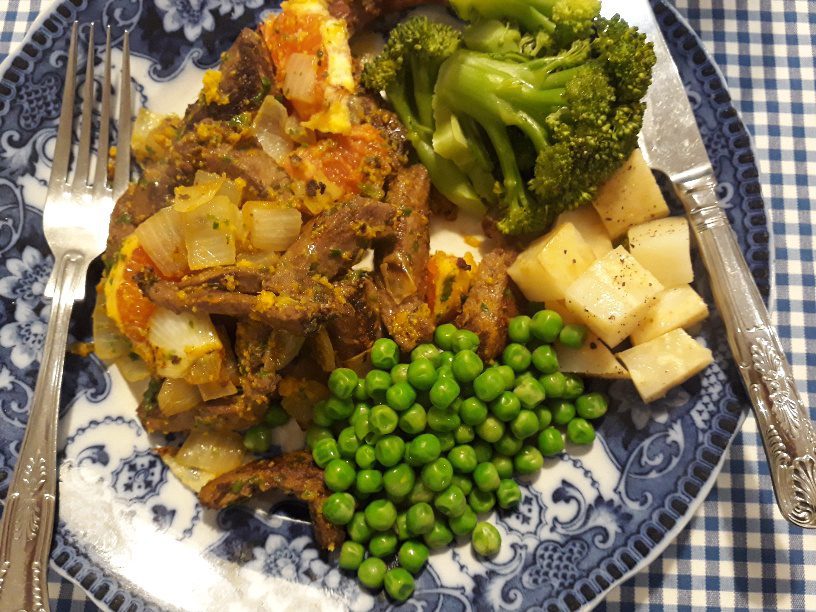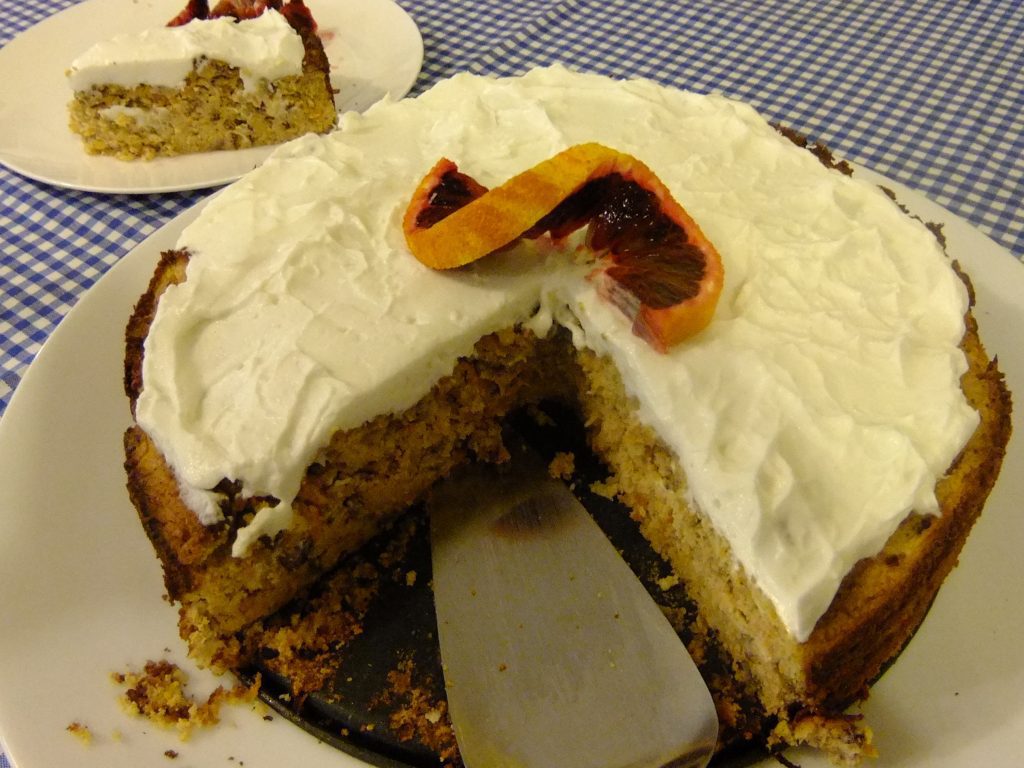
Oct 23, 2020 | Anna's Best Recipes, Main courses
My mother sent me the recipe cut out of the newspaper and I love it. Just the thing for a cold, dark Autumn night as we all stay in our houses. Many of my patients find that a paleo-style diet (vegetable-rich, virtually grain-free, dairy-free with meat, fish, eggs and good fats) makes them feel SO much better than a so-called “healthy diet” that is overloaded with grains and potatoes. The proof of the pudding is in the eating. This pot roast comes with its own gorgeous rich brown sauce. I love this pot roast because its delicious on the day and I can use leftovers sliced and either reheated in the sauce. Leftovers are your friend if you love eating well but don’t want to spend hours every night in the kitchen. We often eat this with cauliflower mash and a steamed green vegetable like cabbage, broccoli or green beans. Yum…
If you want to feed resolute carnivores and those who want to eat less red meat at the same meal simply add cooked butterbeans about 20 minutes before the end of cooking. They take up the fabulous flavour and are rich in protein.
1kg pot-roasting beef (housekeepers’s cut or topside). This will come tied up with string which stays on till you serve it.
Extra virgin olive oil
2 tbs tamari sauce (avoid if on SC diet)
6 tbs dry white wine
2 star anise (this makes the sauce extra flavoursome)
1 large/2 small cloves garlic, roughly chopped
1 rounded teaspoon raw cane molasses
Freshly ground black pepper to taste
2 onions, each peeled and cut in 8 wedges
2 large carrots, diced roughly
1 heaped tsp arrowroot powder (from health shops) to thicken
1. Preheat a heavy casserole, then add a knob of extra virgin olive oil and sear the beef for a minute each side until very lightly browned (browning isn’t essential, you can go straight to step 2 if you want).
2. Add the tamari sauce, wine, star anise, garlic, close tightly and simmer gently o the top of the stove or in a low oven or slow cooker for an hour.
3. Meanwhile dice the carrots roughly, peel and cut each onion into 8 wedges.
4. Add the molasses, some freshly ground black pepper, carrots, onion, and continue to cook very gently for a further 1½ hours. When cooked, remove the beef and keep warm.
5. If you want to increase the amount of sauce, add a little water (or some leftover vegetable-steaming water).
6. Blend a teaspoonful of arrowroot with a little water, add in a little of the hot liquid, then add to the juices in the casserole and bring up to the boil, stirring, until the sauce thickens and clears.
Serve with:
LOTS of steamed green veg and some mashed Swede turnip or cauliflower mash.
Why this is good for you:
Long slow cooking is much preferable to cooking at high temperatures because fewer toxic byproducts are created to would cause more inflammation in your body. For this reason, browning a single large piece of meat is better than browning small pieces. When I’m feeling really healthy I don’t brown this pot roast at all and it still tastes delicious – the sauce is so rich. Red meat contains acetyl-carnitine. For people with serious energy problems (eg M.E./chronic fatigue syndrome/long covid) eating foods that contain acetyl-carnitine every day can bring about great improvements in energy.

Apr 1, 2015 | Anna's Best Recipes, Cakes, biscuits & bars, Desserts & drinks
I have to admit I was dubious about making this cake because it contains no grains. I couldn’t believe it could be as nice as the wheaty carrot cake I used to make before I learned I was coeliac. But this one is lovely and moist and not as fiddly to make. The icing is phenomenal whether you go for the dairy-free or the dairy-laden option. I’ve adapted the recipe slightly from the one on “Wheat Belly” by cardiologist William Davis. He writes about why humans are totally unsuited to eating gluten and how you can enhance your health by cutting grains. The original recipe uses double the sweetener for the cake, but I found that a bit sickly. If you (or your kids) have a massive sweet tooth though, feel free to double it…
For 10 generous servings:
Cake:
125g coconut flour
90g xylitol or erythritol
2 tbs grated orange zest*
1 rounded tbs ground flaxseeds
2 rounded tsp ground cinnamon
1 rounded tsp ground allspice
1 rounded tsp grated/ground nutmeg
1 rounded tsp gluten-free baking powder (this is usually free of toxic additives)
Pinch Himalayan salt/Atlantic sea salt
4 large eggs, organic if possible
105g coconut oil, gently melted
200ml natural soya yoghurt, natural yoghurt or kefir
100ml full fat coconut milk (tinned is fine)
2 tsp pure vanilla extract (not “essence” unless you are happy to eat gluten)
160g (2 cups) finely grated carrots
110g pecans, chopped (or use walnuts)
23-25cm circular or square springform baking tin
Electric cake mixer or whisk
Icing (vegan or standard cheese base):
1 tbs lemon juice or home made kefir
1 tbs xylitol/erythritol (or more, to taste, if you want it sweeter)
200g plain Coyo (dairy-free yoghurt) for dairy-free/paleo diets OR ricotta cheese if you want to eat dairy
Alternative kefir cheese icing (kefir is tolerated by most dairy-sensitive people):
200g kefir cheese (made by straining kefir through muslin/nut milk bag to remove the watery “whey”)
2 tbs xylitol
Optional: zest of a lemon
*If you don’t use organic oranges, there will be pesticide residues on the peel. So put your oranges into a litre of water, add 2 tbs vinegar and leave for at least 20 minutes before scrubbing well (to remove the chemicals). This trick also works for cleaning vegetables (leafy greens can just be soaked and washed off after).
1. Preheat oven to 170C (155C fan) and grease the baking tin with coconut oil.
2. To make the cake: combine the coconut flour, erythritol, xylitol, orange zest, ground flaxseed, cinnamon, allspice, nutmeg, baking powder and salt in a large bowl and mix by hand.
3. Beat together the eggs, gently melted (just hand hot) coconut oil, yoghurt or kefir, coconut milk and vanilla in a medium bowl. Pour the egg mixture into the coconut flour mixture. Using an electric mixer, beat until thoroughly mixed. Stir in the carrots and pecans by hand. Pour the mixture into the baking tin.
4. Bake for around 1 hour checking after 45 mins. When a toothpick/skewer inserted into the cake comes out clean it’s done. You want the cake to remain moist. Much better slightly undercooked than over, I promise!
5. To make the icing: combine the Coyo or ricotta with the lemon juice and xylitol in a bowl and beat until smooth. If you’re making the kefir cheese based icing omit the lemon juice and optionally add the zest of a lemon.
6. Spread the icing over the top of the cooled cake.
Why this cake is better for you:
As you probably know any food that’s cooked above 100c generates toxic by-products (though less so if you don’t use sugar or polyunsaturated oils). That’s why a raw or just gently cooked diet (nothing above 100c) helps keep you younger longer, lowers inflammation and generally helps your body. That said, who doesn’t occasionally want something like a cake? This one is ideal as it’s grain free and protein rich. This means it doesn’t cause the fluctuations in blood sugar that fuel inflammation and can trigger skin issues, fatigue or dips in brain function. Coconut, unlike most oils, is still good for you even when it’s been heated. Roll on full-fat coconut milk! The low fat stuff is filled with emulsifiers and lacks the good stuff. Xylitol is what’s called a sugar alcohol and is 1.6 times as sweet as sugar but with half the calories. It’s not absorbed by your body so it doesn’t affect blood sugar levels. It’s generally deemed to be safe. If you have a very sensitive bowel, go cautiously with xylitol because it can be hard for some people to deal with in large quantities. Guideline: just a slice, and not the whole cake in one sitting!
If you use Coyo yoghurt (or kefir) in the icing, you will also be getting a boost of friendly bacteria in this delicious cake to boost vitality and wellbeing.



